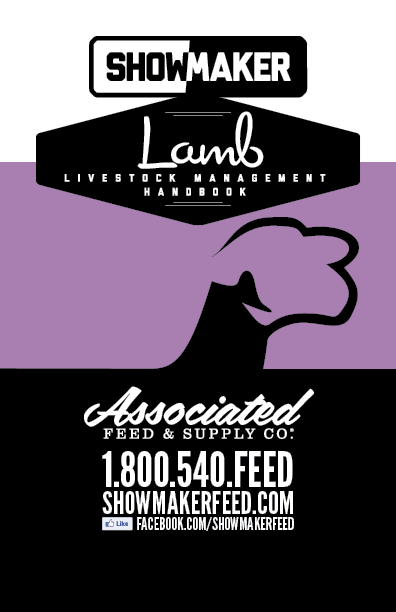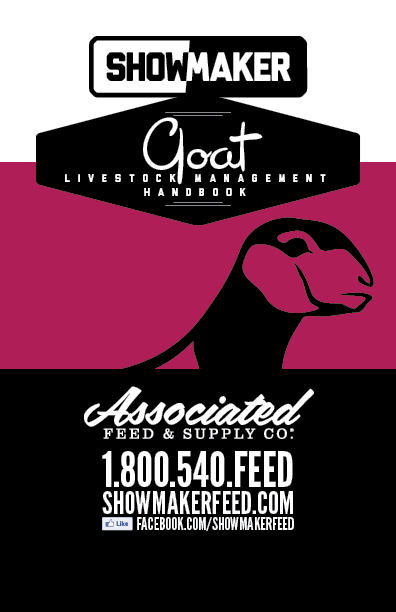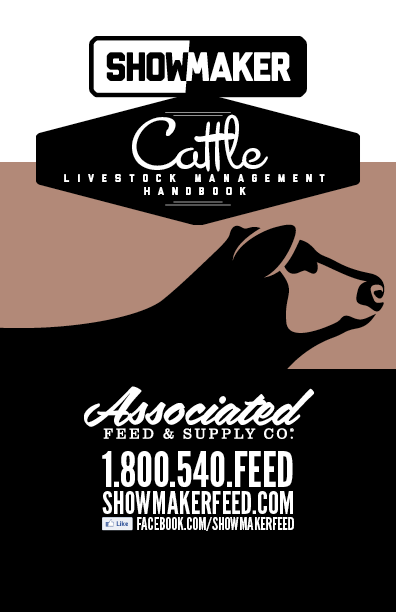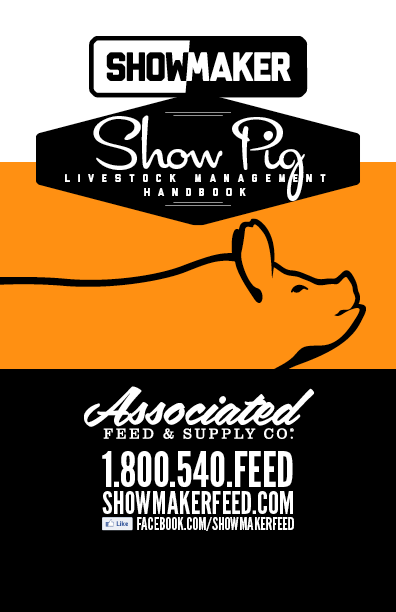Animal Care

- Have safe, clean pen available upon arrival
- Allow lambs to settle in by feeding mostly hay the first three days
- Provide fresh ,cool, clean water at all times
- Hand feed the grain ration two times a day
- Feed the lambs at least twelve hours apart
- Make any ration changes, or increases, gradually over several days
- Closely monitor health, watch for signs of illness
- Stay current on tetanus and overeating vaccinations, as well as worm frequently
- Weigh lambs regularly and monitor gains
- Grain intakes should be two to four percent of the lamb’s body weight
- Provide exercise to condition lambs for show
- Switch to Total Lamb to maintain top show condition
- Practice showing lambs in different environment to get show ready
- Minimize stress when handling your show lamb
- Good management, proper nutrition, health monitoring and good genetics will put you in the winner’s circle

- Have a clean spacious pen available upon the goat’s arrival that will protect from predators and environmental conditions
- Allow the goats to settle in by feeding alfalfa hay and a limited amount of grain for the first few days to get over stress from relocating
- If possible feed the goats in pairs according to weight when possible
- Provide fresh, cool water that avoids direct sunlight
- Hand feed your grain ration at least two times daily
- Feed your goats at least twelve hours apart, make sure you feed about the same time daily, including weekends to avoid stressing the animal
- When making feed changes in either rations or amounts fed, do so gradually over several days time to avoid causing rumen disruption
- Closely monitor for any signs of illness. Consult a veterinarian as needed, make sure and follow directions and observe withdrawal times on any therapy used
- Goats should be vaccinated against Tetanus and Enterotoxaemia
- Goats should be treated for internal and external parasites, 60 and 30 days prior to reaching end point
- Weigh goats regularly and monitor gains. Average daily feed intake should total approximately 3–5 % of your goat’s body weight
- It is good to avoid feeding diets formulated for horses, excess calcium can lead to urinary calculi. Sheep diets can be used when copper is supplemented to the diet make sure they contain ammonium chloride to help prevent urinary calculi. It is ok to feed diets that contain Monensin to help prevent coccidiosis
- If your goat is approaching the fairs maximum weight limit several days before the fair, provide exercise, limit feed intake, and introduce a vitamin and mineral, protein supplement to the diet. This will help keep the animal fresh and help prevent losing muscle tone
- In the case where your goat is to lean prior to the show, you may consider adding rolled grains as a percentage of the diet to increase the energy level of the ration
- Practice showing your goats in different environments prior to the show to allow the animal to adjust without causing undue stress

- Provide good quality forage with all specialized show diets
- Always provide plenty of fresh, cool, clean water for your animals
- Feed at a rate of 2–3 % of the steer’s body weight in grain in addition to good quality hay
- Follow recommended program in terms of body weight to achieve the correct amount of condition
- Be sure to treat any signs of sickness or disease when noticed to prevent poor performance
- Consult with the breeder and local veterinarian when treatment is needed and observe withdrawal times
- Feed twice daily, be consistent, same time everyday to avoid stressing the animal
- Be sure consistent gain is achieved. Holding animals at maintenance for prolonged periods can result in improper conditioning and development

- Make sure you have a clean, dry pen for your pig and provide plenty of fresh and clean water at all times
- Hand feed your pigs for the first week to ten days to gain an idea of how much your pigs are eating
- Observe stool condition, coughing and running noses during the first two weeks. Consult a veterinarian when treatment is needed
- Treat pigs for internal and external parasites every 4 to 6 weeks
- Closely monitor the weight of your project throughout. Know your market projects Average Daily Gain and consumption
- Make sure that your pigs are getting plenty of exercise to increase muscle development
- Keep your pigs on an excellent diet that is balanced in amino acids, proteins and fat to assure that your pigs reach its maximum genetic potential
- Wash your pigs two to three weeks prior to the fair
- Good management, proper nutrition, health monitoring, and good genetics will put you in the winner’s circle







